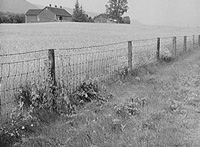

There are further boundaries not yet included in Chart 1 for example, the limits of Marine Protected Areas. The increasing expansion of human activities and the focus on the ratification of UNCLOS are reasons to solidify and expand on existing, long-standing uses of hydrographic products as portrayers of boundary information. Not all HOs use all of these, at least they do not use them as yet, but the need has been recognised and the opportunity has been created though their inclusion in Chart 1.įuture Use of Charts in Boundary Demarcation It also provides for the following, which are not necessarily part of UNCLOS: international boundary on land, limit of fishery zone, customs limit and harbour limit. Currently, Chart 1 includes the following UNCLOS-related boundaries: International Maritime Boundary, Straight Territorial Sea Baseline, Seaward Limit of Territorial Sea, Seaward Limit of Contiguous Zone, Limit of Continental Shelf, Limit of Exclusive Economic Zone. Indeed, the CLCS itself is to be ‘…made up of experts on hydrography or geology or geophysics…’.Ĭurrent Use of Charts in Boundary DemarcationĪll items displayed on navigation charts are explained in Chart 1, which serves in the same capacity as does a key or explanation of symbols on a land map.

At a different level, the Guidelines produced by the Commission on the Limits of the Continental Shelf (CLCS) require that the accuracy of depth information be determined by the standards of the IHO. The Convention does not name these, as is normal in the wording used in treaties and in legislation, but there is a clear understanding that one of the bodies referred to is the International Hydrographic Organisation (IHO). Throughout UNCLOS, there are frequent items and issues that should be referred to ‘the competent international organisation’. Table 1 offers a brief condensation of the interplay between other Articles of the Convention and hydrography. ‘Baselines from which the breadth of the Territorial Sea is measured’ provide one example of hydrography’s role, since ‘normal’ baselines are defined as ‘the low-water line along the coast as marked on large-scale charts’. The ratification of the United Nations Convention on Law of the Sea (UNCLOS) brought together a great deal of existing practice and treaty law into one codification agreed to by most of the nations of the world. Hydrography’s Boundary Role As Expressed within UNCLOS HOs are concerned with ensuring that charts and other hydrographic products can perform this role appropriately and to a known degree of uncertainty. Charts thus have a different role than do topographic maps, and Hydro-graphic Offices (HOs) have a different and higher responsibility than do their land-based equivalents. The delineated boundary on a chart provides the ‘public notice’ function which fences and survey monuments do on land. On land, demarcation is easily conceptualised, but in the marine environment, demarcation in situ is rarely possible consequently demarcation is of necessity combined with delineation, and the medium most frequently used for this combination is the hydrographic chart.

demarcation, the process of physically marking the geographical location of a boundary. delineation, describing the location of the boundary on maps or by co-ordinates and 3. definition, or specifying the ‘locus’ of the boundary in the wording of law 2. On land, boundary delimitation comprises three steps: 1. Charts and hydrographic products are increasingly used for a vast range of activities, including the delineation and demarcation of boundaries. As human use of the oceans continues to grow both in spatial scope of operations and diversity of activities, the use of hydrographic charts in roles other than navigation is expanding.


 0 kommentar(er)
0 kommentar(er)
